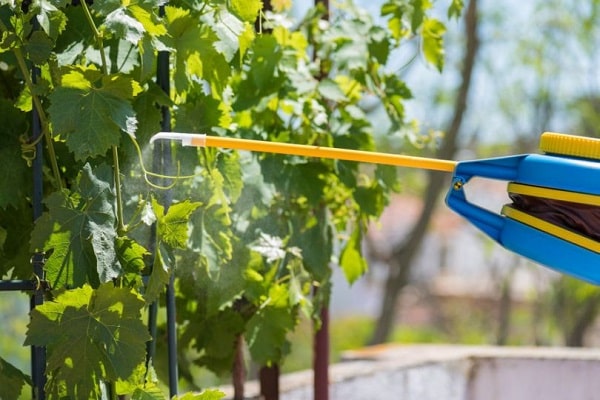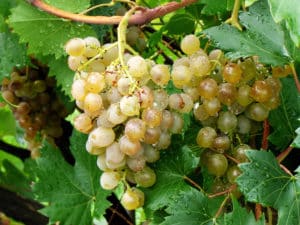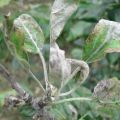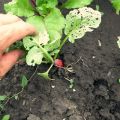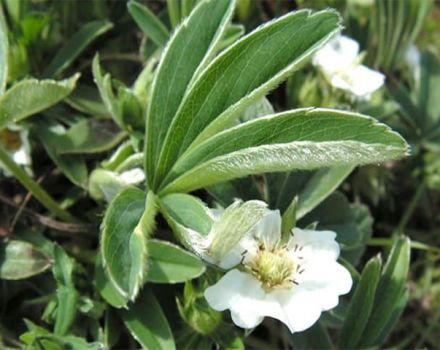Methods of dealing with grape leafworm on grapes with chemical and folk remedies
The succulent leaves of garden trees and shrubs, like a magnet, attract various pests. They do not allow the culture to develop normally, and the plant does not please with the harvest. Insects quickly spread over vast territories and destroy gardens. Grapes especially suffer from the bunchy leafworm. All methods of struggle may turn out to be ineffective, since the butterfly may not be detected in time. She flies not during the day, but at night, breeds voracious offspring that adore berries.
Description of the pest
The bunchy leafworm finds the vine, wherever it grows - in the middle lane or in the south. Fruits damaged by insects rot in wet weather and dry out in heat.
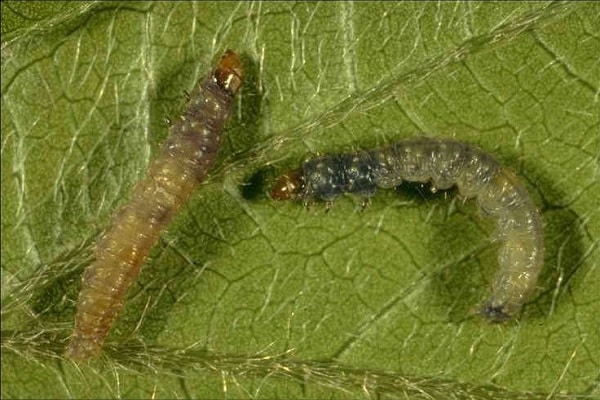
Butterfly and caterpillar appearance
The wingspan of the grape worm does not exceed 2 cm, the front ones are distinguished by a variegated color. Olive feathers alternate:
- with brown;
- lead;
- redheads;
- light yellow.
The hind wings have a gray tint with dark edges. The butterfly, whose body is about 13 mm long, lays oblong, almost transparent light eggs with a diameter of slightly more than half a centimeter. The green-brown pupa has the same size, which sharpens at the end. For the winter, it climbs into cracks in the bark or into the ground near the root of the vine.
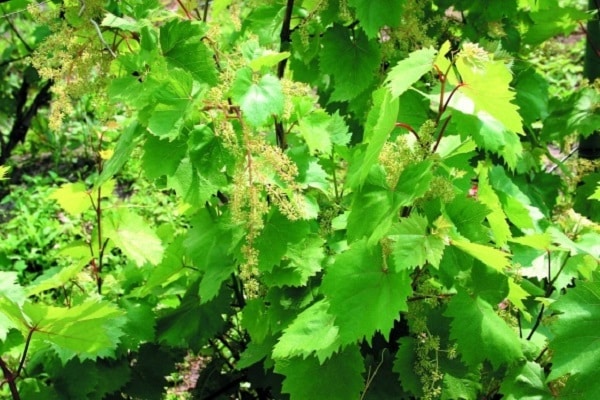
A caterpillar up to 10 mm long eats berries, which can have a different shade - gray, olive, light yellow.
Life stages of a pest
Butterflies leave the shelter and start flying when the air heats up to 14 ° C. Female individuals live for about 4 days and lay eggs. A week or 10 days later, caterpillars emerge, decorated with golden shields in front.

The leaf roll itself turns into a pupa for the winter, and with the arrival of heat it again becomes a butterfly.
The first generation of pests eats buds, petals and ovaries, the second drinks juice from unripe berries, the third damages ripe grapes.
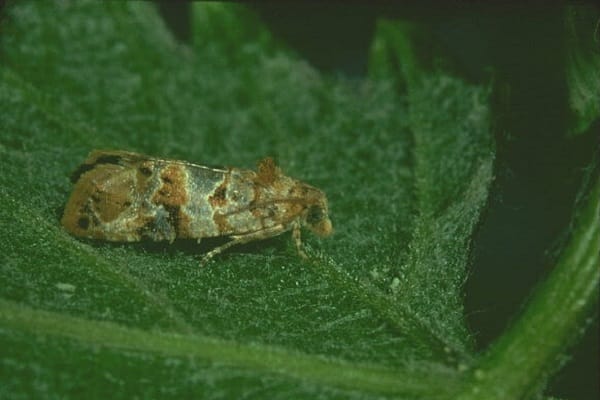
Reproduction
The butterfly flies for a little over a month. For 3-4 days that the female lives, she lays up to 160 eggs at a time on shoots, leaves and even buds. One butterfly gives not 1, but 3 generations. Caterpillars, which live and feed for 35 days, entangle vines and berries with cobwebs. Damaged fruits completely rot during the rain.
Butterflies fly from one plant to another, covering all vineyards in the region.The first generation of parasites appears when the leaves bloom, the second generation is formed from pupae, the third at the end of July.

Resistant and parasitic varieties
Suffers most from pest grapes, in the berries of which there are many essential oils. The caterpillars of the leafworm enjoy the bunches of the French varieties Pinot Noir and Aligote with pleasure. Grapes of Moldovan selection are less affected by parasites:
- Frumoasa Albe - with immunity to the main crop pests;
- In memory of Negrul - a hybrid with dense pulp;
- December - average ripening period.
However, these varieties do not have 100% resistance to the leaf roll. To reduce the risk of pest damage, it is necessary to carry out preventive measures.
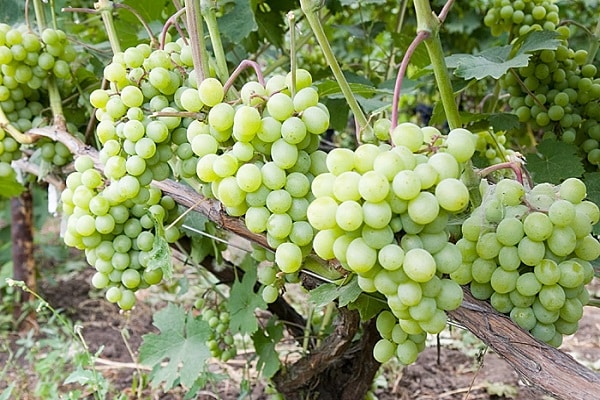
What contributes to the appearance of the leaf roll
Wet and hot weather helps spread the parasite. The butterfly, turning into a pupa and hiding in the cracks of the bark, tolerates winter well. When leaves appear, it lays eggs, from which the first generation of caterpillars is formed.
The leafworm flies from one vine to another plant and covers large areas in a short time, especially in mild weather. Unharvested grass near bushes, remains of stems and the fact that it is difficult to notice a night leafworm contribute to the spread.

What harm does grapes
The butterfly itself and the hatched larvae do not damage the branches, do not touch the fruits. Caterpillars eat ovary, buds and berries. Gardeners notice that they are more likely to infect vines with large dense bunches, which are full of berries.
The pest can destroy up to 80% of the crop.

Signs of insect infestation
The fact that parasites that feed on fruits have appeared on the plant is indicated by the cobweb entangling shoots and bunches. Caterpillars eat the ovary, green and ripe berries, and the decay products of pests negatively affect the condition of the vine.
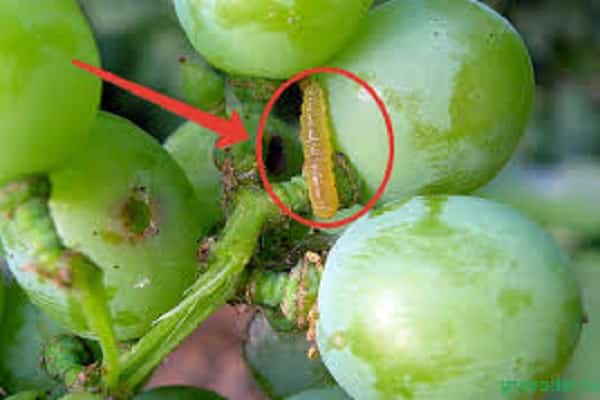
What to do
If a cobweb has already formed on the plant, measures will have to be taken against each generation of the grape roll. To deal with pests, different methods are used, starting with setting traps, burning the affected ovary and shoots.
Chemicals
Knowing how to deal with the leaf roll can save the crop. For the treatment of vines with a significant number of pests, contact and systemic chemicals are used.

To destroy a small number of parasites, use:
- Aktaru and Karbofos;
- “Actellik and“ Landing ”;
- "Binom and Alatar".
The drugs Alfatsin, Fastak, Ivanhoe, Inta-Vir help to cope with the huge population. Plants are processed at a temperature not higher than 23 ° C.
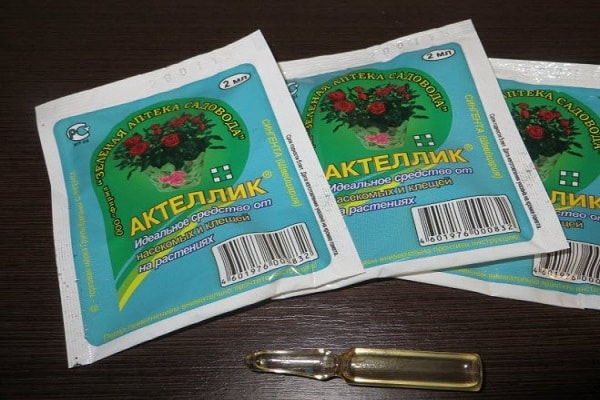
Control with biological insecticides
Chemical preparations are unsafe for human health, accumulating in fruits, they release toxins. You can protect crops from gluttonous parasites using less harmful biological agents. Grape processing with Bitoxibacillin or Lepiodocide is carried out every decade until the leafworm population is completely killed.
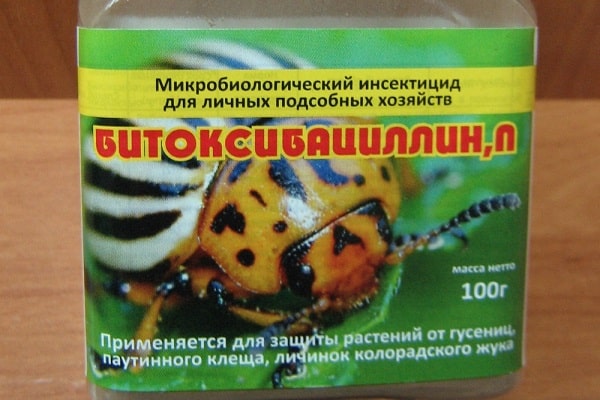
Folk remedies
With a small number of parasites, it is worth trying to cope with them with a gentle method. Before the buds appear, glass jars are filled with fermented jam, preserves, molasses, tied to plants to a height of 1.5 m. Butterflies will flock to the smell.
Spraying with tincture of tobacco dust, a decoction of wormwood and celandine, potato and tomato tops helps to cope with the leaf roll.

Processing terms and rules
When a cobweb appears on grapes, you need to fight each generation of the parasite. The vine is sprayed 2 or 3 days after the decrease in the activity of the butterflies.Treatment with folk remedies is carried out before flowering and when the ovary appears. Chemicals and biologicals must be constantly changed, otherwise the leafworm will get used to them.
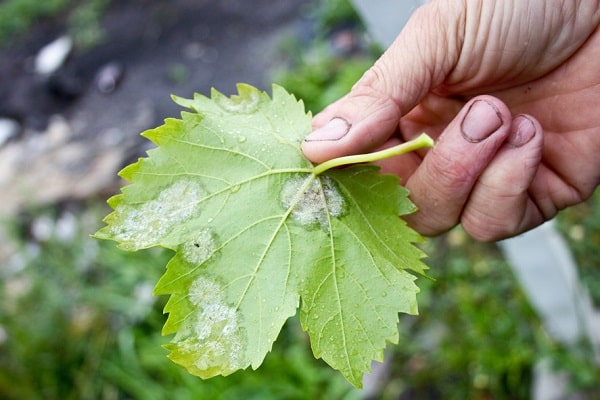
Prevention methods against re-infection
In order to prevent the appearance of a dangerous pest, when planting grapes, it is necessary to observe agrotechnical requirements, to leave a large distance between the rows, which will provide good lighting and ventilation of the vine.
For prevention purposes:
- At the beginning of spring, the bole and shoots are cleaned of old bark, which must be burned.
- After picking the berries, the plants are sprayed with Bordeaux liquid.
- For the winter, the bushes and the ground around them are treated with vitriol - copper or iron.
You need to carefully weed the area from the weeds. Chickens, starlings, hedgehogs help fight the leafworm, they eat the larvae.
